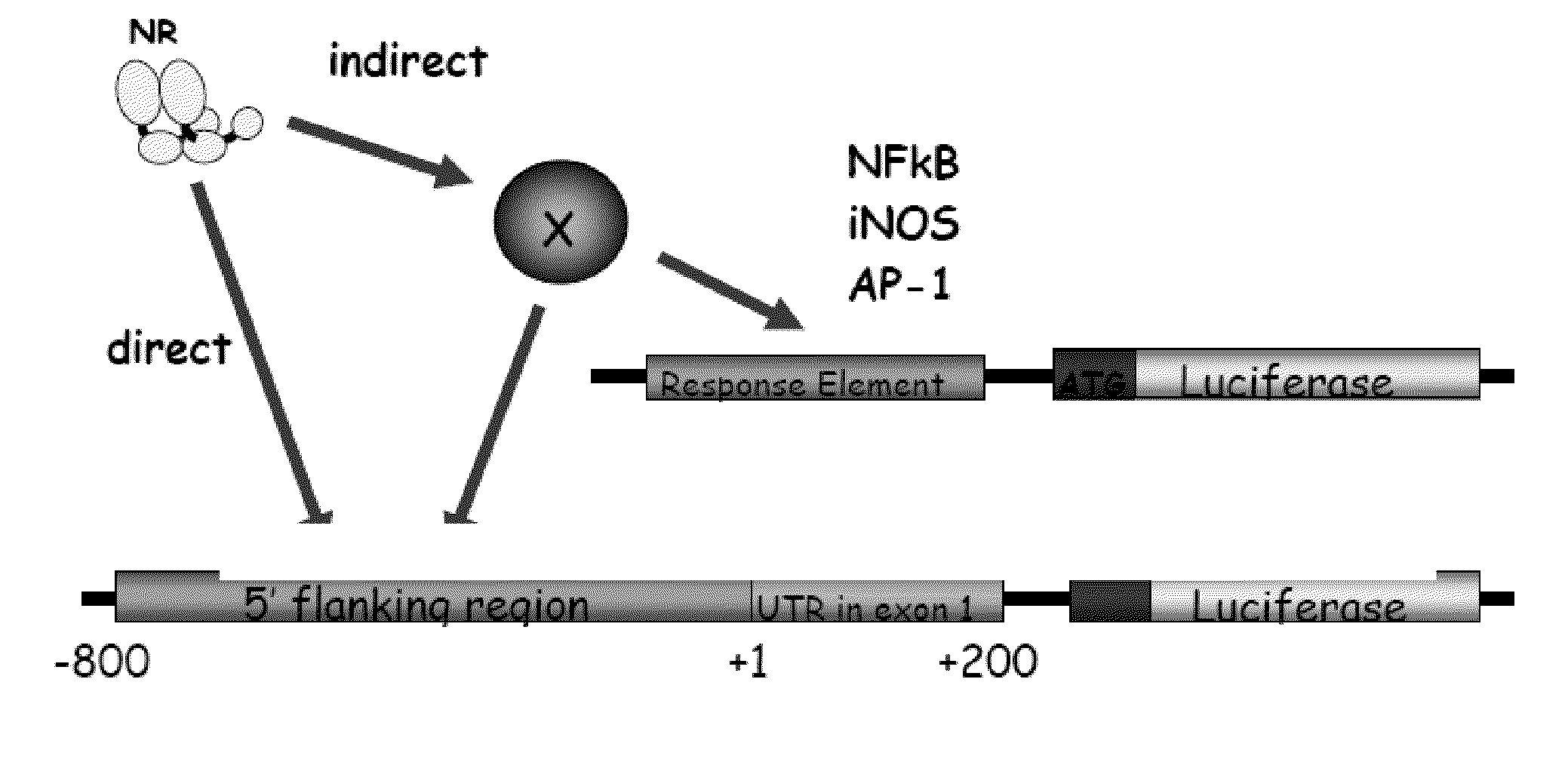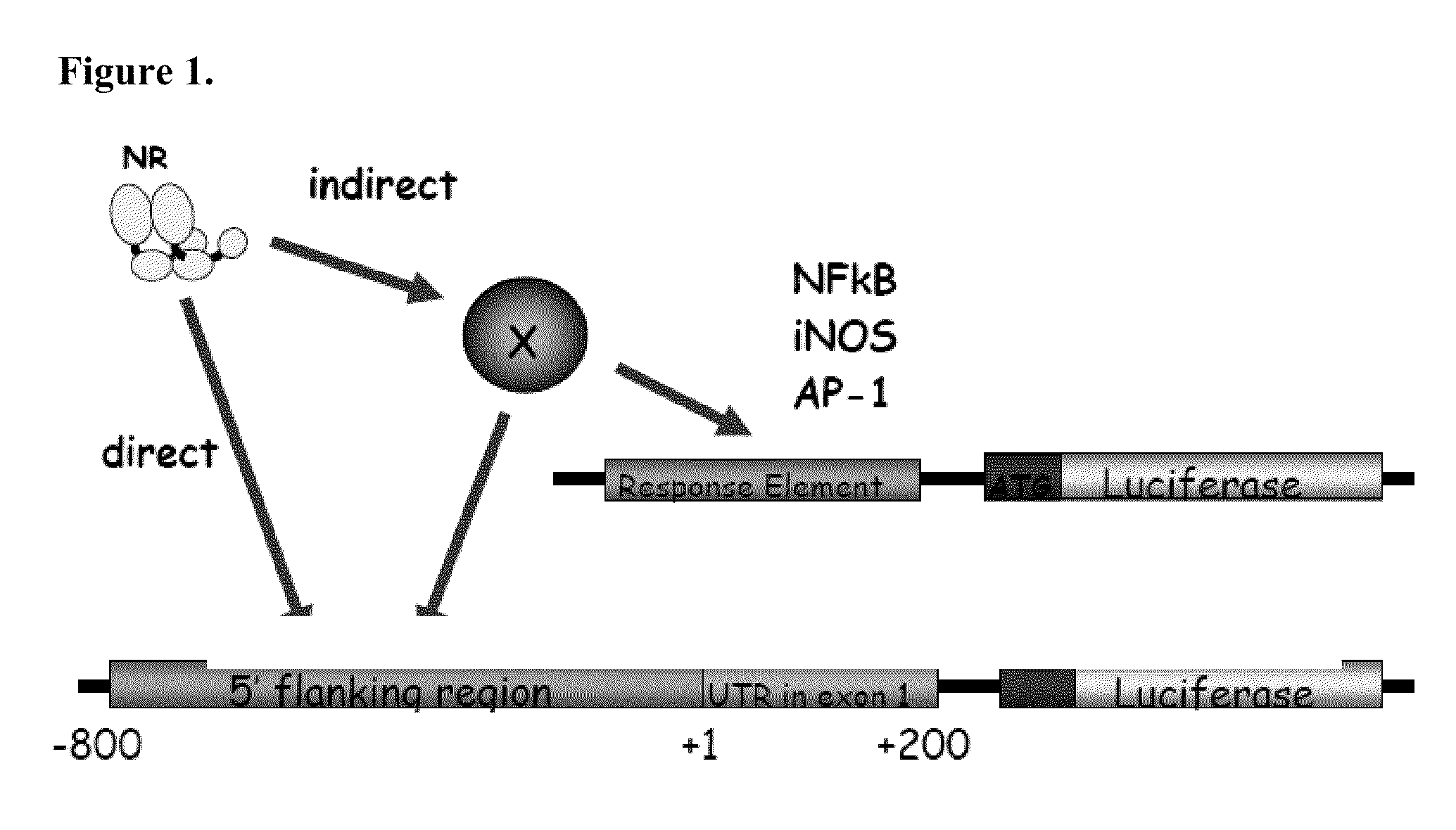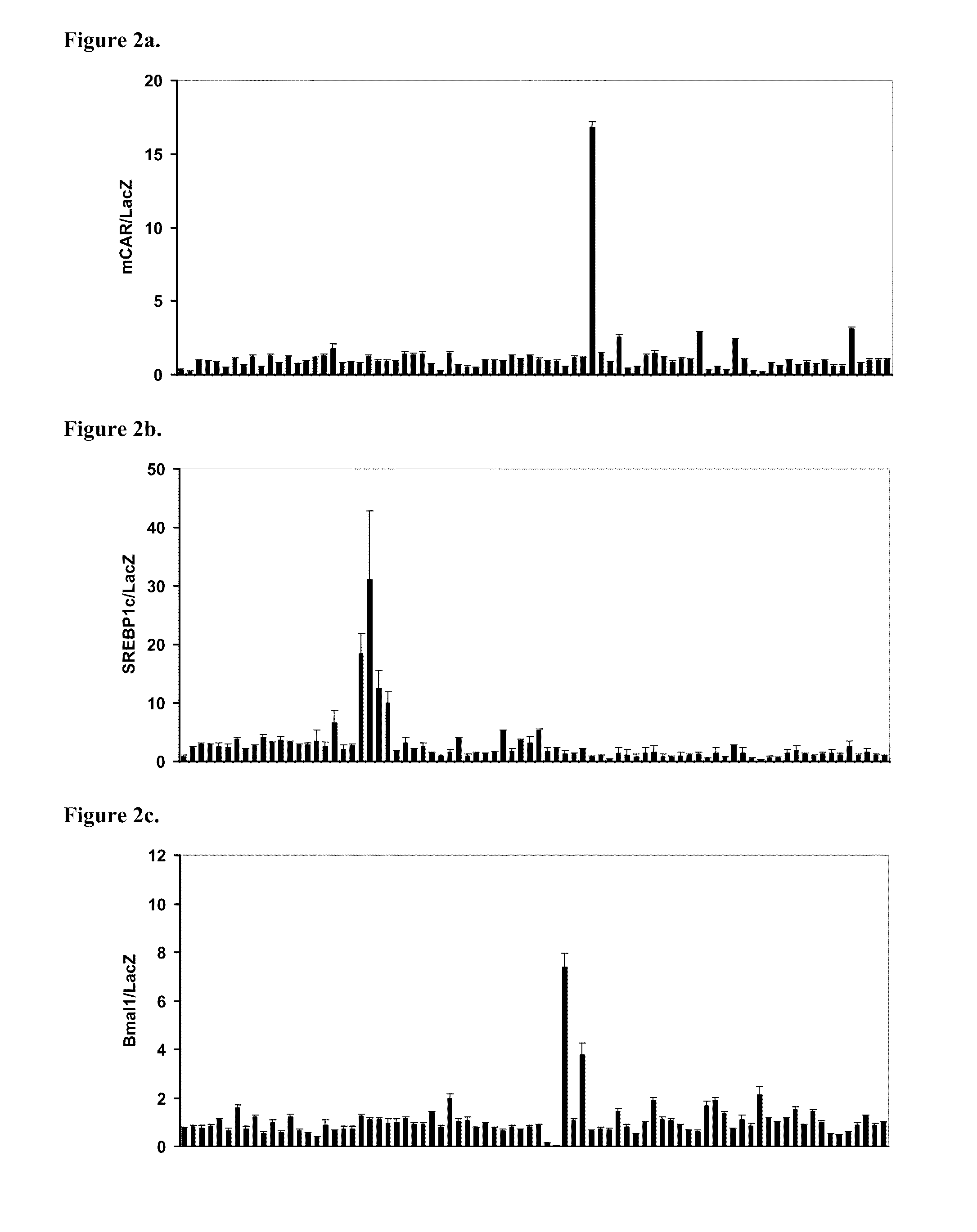Methods of Identifying Functional Characteristics of Promoters, Transcription Modifying Proteins and Transcription Modulating Agents
a technology of transcription modifying proteins and functional characteristics, applied in the field of methods of identifying functional characteristics of promoters, transcription modifying proteins and transcription modulating agents, to achieve the effect of facilitating high-throughput functional analysis
- Summary
- Abstract
- Description
- Claims
- Application Information
AI Technical Summary
Benefits of technology
Problems solved by technology
Method used
Image
Examples
example 1
Functional Analysis of Transcription by the Nuclear Hormone Receptor Family: Circadian Pathway Discovery
[0180]There is described herein the development of a novel high-throughput method for functional analysis of complex transcriptional pathways controlled by the Nuclear Hormone Receptor (NHR or NR) Superfamily. The approach employs a validated cDNA expression library including all mouse NHRs combinatorially paired with a large collection of pathway specific promoter-reporter libraries. The pairing facilitates rapid evaluation of the transcriptional regulation of each genetic pathway by any NR in a given context (i.e., in the presence or absence of ligand, in different cell lines etc.).
[0181]In a first example, there has been evaluated the response of the Circadian Rhythm genetic circuit to a broad selection of receptors and their ligands. Circadian rhythms are postulated to be controlled by a transcriptional feedback system fluctuating as a function of the light-dark cycle and defe...
example 2
Regulation of the Fibroblast Growth Factor 9FGF) Family by NHRs
[0204]Provided herein are methods for the identification of NHR responsive promoters whose gene products comprise the Fibroblast Growth Factor (FGF) family. FGFs are a family of 22 distinct polypeptide hormones with diverse biological activities including angiogenesis, development, and cellular proliferation and differentiation (Beenken & Mohammadi, 2009, Nat. Rev. Drug Discov. 8:235-253). Recently, several members of this family have been identified as targets of the NHRs VDR (FGF23), PPARa (FGF21) and FXR (FGF15 / 19), mediating some of the pleiotropic actions of these NHRs (FIG. 42).
[0205]The involvement of FGF signaling in human disease is well documented. Deregulated FGF signaling can contribute to pathological conditions either through gain- or loss-of-function mutations in the ligands themselves, or their receptors (FGFRs). For example, FGF23 gain of function in autosomal dominant hypophosphataemic rickets, FGF10 lo...
example 3
Characterization of the PPAR Regulome
[0215]As known in the art, a subgroup of NHRs, the peroxisome proliferator-activated receptors (PPARα, γ, and δ) are important regulators of lipid metabolism. Although they share significant structural similarity, the biological effects associated with each PPAR isotype are distinct. For example, PPARa and PPARγ regulate fatty acid catabolism, whereas PPARγ controls lipid storage and adipogenesis. PPARa is predominantly expressed in the liver where it enhances fatty acid combustion by upregulation of the genes encoding enzymes in β-oxidation. PPARγ is mainly expressed in adipose tissue and serves as an essential regulator for adipocyte differentiation and promotes lipid storage in mature adipocytes by increasing the expression of several key genes in this pathway. PPARγ is widely expressed and has been shown to be a key regulator of fat burning in peripheral tissues by coordinating fatty acid oxidation and energy uncoupling. The different functio...
PUM
 Login to View More
Login to View More Abstract
Description
Claims
Application Information
 Login to View More
Login to View More - R&D
- Intellectual Property
- Life Sciences
- Materials
- Tech Scout
- Unparalleled Data Quality
- Higher Quality Content
- 60% Fewer Hallucinations
Browse by: Latest US Patents, China's latest patents, Technical Efficacy Thesaurus, Application Domain, Technology Topic, Popular Technical Reports.
© 2025 PatSnap. All rights reserved.Legal|Privacy policy|Modern Slavery Act Transparency Statement|Sitemap|About US| Contact US: help@patsnap.com



